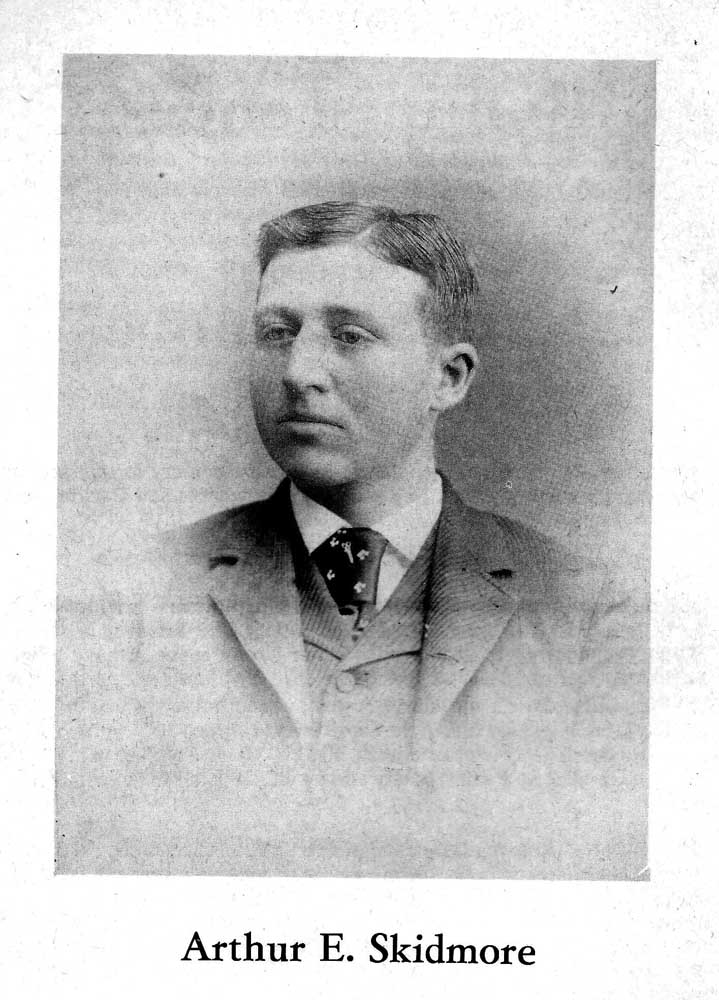Saints or Sinners? Characters of Pacific County: Legendary teacher learned the old-fashioned way
Published 9:58 am Wednesday, January 15, 2025

- Arthur Skidmore’s four-part story, ‘Readin’ ‘N’ ‘Writin’ may be found in installments in various issues of the Pacific County Historical Society’s quarterly publication, the Sou’wester. In deference to space limitations, his stories have been somewhat truncated here.
Arthur E. Skidmore 1862 – 1952
Arthur Skidmore arrived in Pacific County with his parents and siblings Frederick and Mary in 1872. They settled near the Willapa River in the area that would eventually become South Bend.
Arthur was ten years old and eager to go to school. There were none in the area, but luckily the Rose family (just up the Willapa River from the Skidmore place) had hired a German man to teach their children. Other children in the area were invited to attend classes there as well, and so Arthur’s education began — he and his brother making the five-mile row morning and evening in the family’s battered rowboat.
Many years later, after his own retirement as an educator, Arthur would write a four-part story, “Readin’ ‘n’ ‘Ritin,’” telling about that experience and about the Nob Hill School where he completed his own education and began his teaching career. The school was built in 1871 by parents of those who would be its first pupils, the lumber donated by the Old Mill. “It stood on the hill,” Skidmore wrote, “high above the river bank where the Nob Hill homes and paved streets are now. The picture of that schoolroom will always be fresh in my memory.”
The walls were made of one-by-six boards. They stood on end, reaching from floor to ceiling. It seemed that the builders must have fallen short of lumber or of interest, as a space by a window back of the door remained unceiled. During future vacations, for much of the time proved to be vacation, the squirrels learned of this hollow wall and gained access to it. Here, in after years, they raised their families.
A recitation bench sat nearby, up in the front. The pupils’ desks were two wide boards extending the length of the room, nailed on either side wall at a slant of about 45 degrees. A long backless bench was stationed in front of each desk. Everybody faced the wall with his back to the teacher, the boys on one side, regardless of age or size, and the girls on the other.
If someone fractured a law, the school was immediately dismissed and turned into a courtroom. The teacher became self-appointed judge. He selected his jury and other court officials. The culprit was seized and the court-martial began.
Two marks served as our clock. Both drawn across the desk by the window, one caught the sun’s rays at noon, the other at four o’clock. If the sun did not shine, we were lost, and obliged to guess at the time. The boy lucky enough to sit near these marks was envied by those who sat in the dark between the windows, for it was his duty and privilege to remind the teacher when the hour of dismissal was near.
A playground was given little consideration then. We played hide and seek, and tag, among the trees and hunted arrowheads along the gravel swales. There were no outhouses of any sort for a year or two. But the surrounding forest lay deep and boundless.
The teachers and their teaching methods (or lack thereof) made a lasting impression on young Arthur, and from his first year of school he vowed that he would someday teach in a way that would help rather than hinder children’s ability to learn.
Teachers were few in those days. Only by chance could one be secured. They must be able to read and write. Further education was not required. Anyone who felt the call visited a district and received some kind of approval or consent to conduct the school.
John Dodge, our first teacher, was about 65 years of age, rather short of stature, with long hair and full beard, both slightly gray. His general appearance was anything but that of a teacher; nevertheless, he filled the lone requirement, for he could read and write. He was engaged for a three-month term at a salary of twenty dollars a month.
John Dodge knew how to sing out the alphabet, or the A B C’s, for the little folks. They must spend at least one year learning these letters before they were allowed to begin to read. The only studies we older pupils had were reading, writing, and multiplication tables and spelling. Mr. Dodge told us we were not old enough to take up grammar, although some of the boys were 16 and 17 years of age…
For writing, Mr. Dodge used the “pot-hook” system. He set the copy, which consisted of a row of crooked marks shaped like pot-hooks, or capital S’s. We wrote no words. The idea was merely to get the habit of being able to swing the hand in making curves — but it was ‘RITIN’ just the same. The multiplication tables had to be wholly mastered before we were considered qualified to work one problem. The three-month term was never long enough. We remained on the tables, taking up the grimy, old printed sheet, or what was left of it, at the beginning of each successive term.
Mr. Dodge never used the rod, but he was a firm believer in the dunce block. If a boy failed to have his lesson, or was caught idle, he was put upon the dunce block and left there for half a day at a time… Occasionally he would slip slyly down and move away from his prison, but Mr. Dodge’s eye was sure to catch him. “Get back there on the dunce block! You can’t learn anything,” he would cry out, and the boy always responded, meekly.
Mr. Dodge had his ten commandments. Having some knowledge of law, he wrote a long list of “Thou shalt not’s.” This he pasted on the front wall. It was the only adornment. He read these over two or three times a week in a voice that meant to carry to all ears in the room. He emphasized some words with extraordinary force as he pointed them out with his stick.
If someone fractured a law, the school was immediately dismissed and turned into a courtroom. The teacher became self-appointed judge. He selected his jury and other court officials. The culprit was seized and the court-martial began. Many afternoons we sat there listening to the wearisome routine. The judge always sentenced the criminal. Usually, it meant to stay a set time after school.
Even after the intervening years, Arthur’s satisfaction with the follow-up to one such episode was clear as he remembered: Not long after this, another offender of the law was to be tried and sentenced. The trial was about to begin, when in rushed a mob of indignant mothers. They straightway scattered judge, jury, and court officials, and from that day on there were no more court-martials.
The waters of the river ebbed and flowed. Tides came and went. Days stretched into months, months into years. My childish dream became a reality and I began teaching.
From the time he entered the teaching profession at age 20, he began to employ some of the innovations that would endear him to generations of Pacific County students — he “decorated” the classroom with maps and pictures, and had students prepare “programs” based on what they were studying and invited parents to attend. His students challenged nearby schools to spell-downs, which were followed up with games and other activities.
Arthur married in 1907 and, although he and his wife Mina of had no children of their own, his forward-thinking teaching methods influenced hundreds of Pacific County students both directly and indirectly during his 34 years of teaching.









